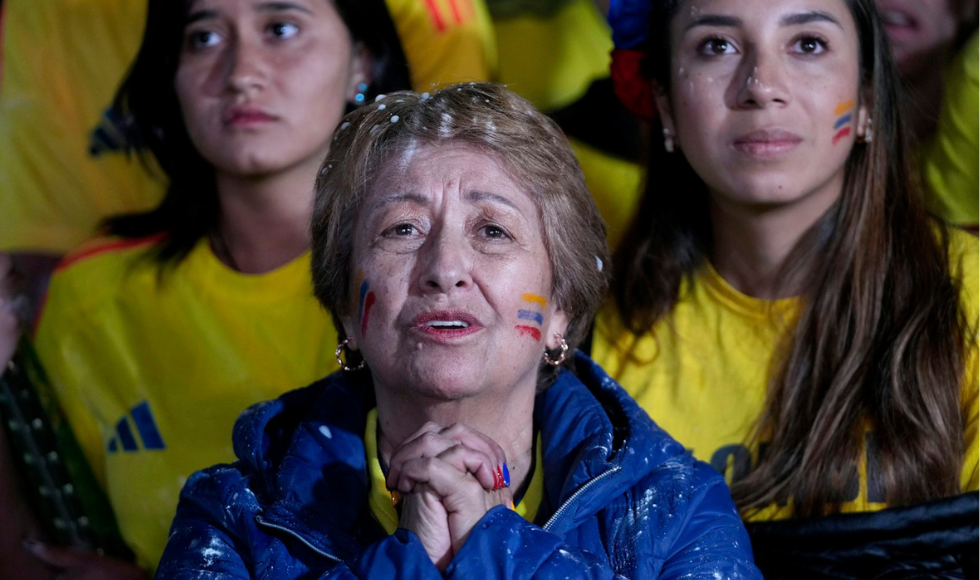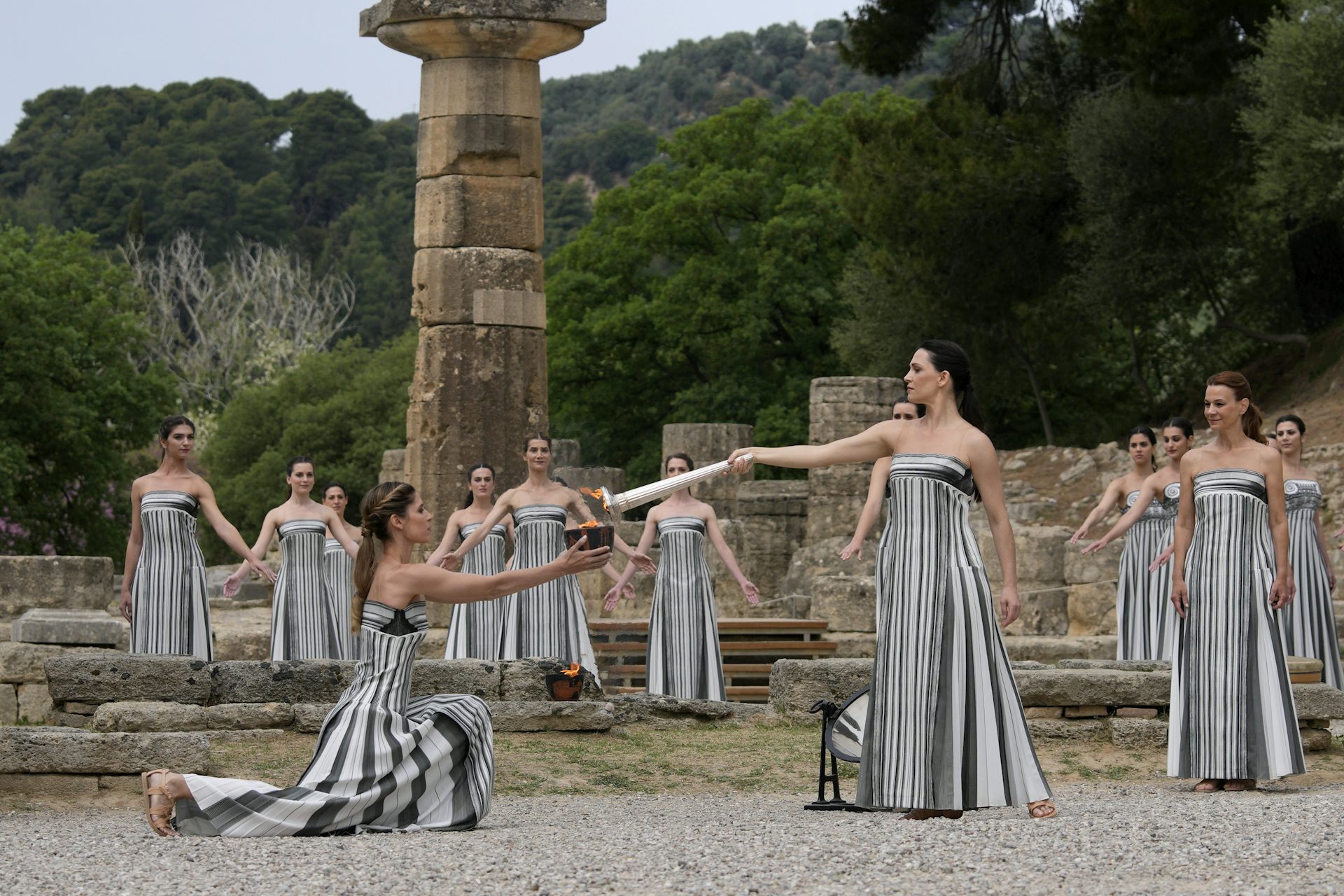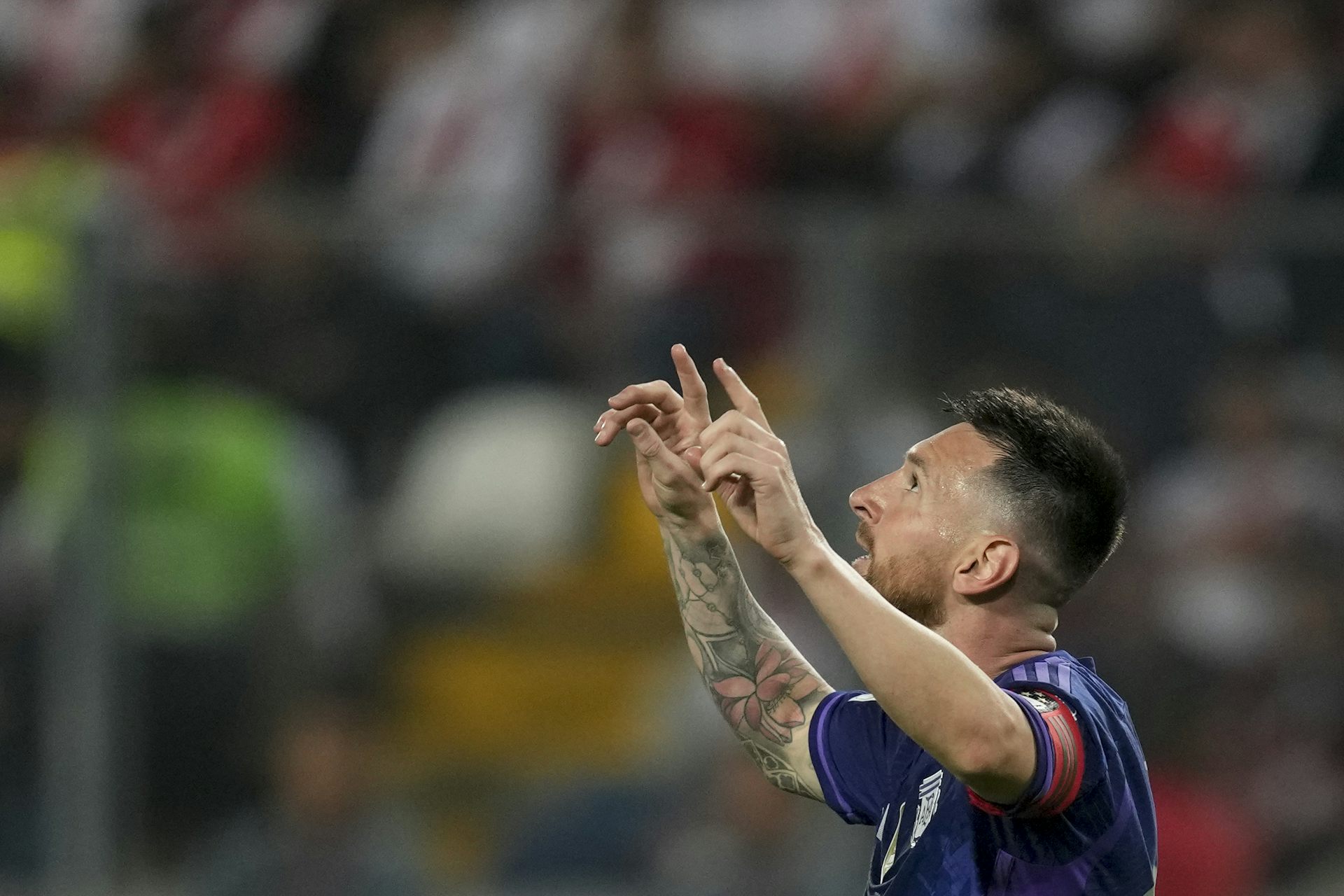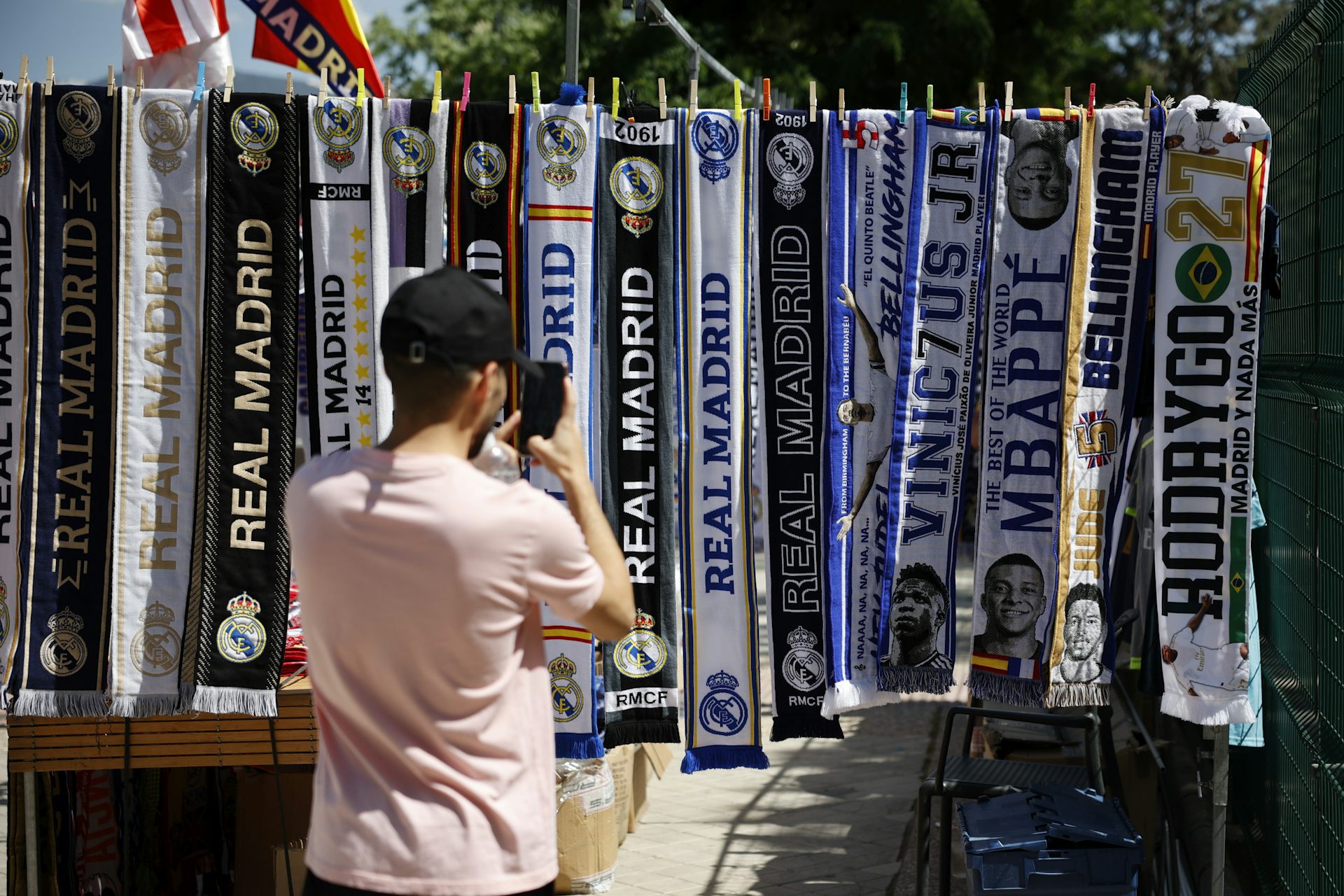Analysis: Soccer and religion have more in common than you might think

Throughout history, sport has played a significant role in communal and spiritual life. Colombia fans watch a broadcast of the Copa America final soccer match against Argentina in Bogota, Colombia, on July 14, 2024. (AP Photo/ Fernando Vergara)
BY Hanna Tervanotko
July 19, 2024
![]() This article is republished from The Conversation under a Creative Commons license. Read the original article.
This article is republished from The Conversation under a Creative Commons license. Read the original article.
People around the world have been captivated by two major soccer tournaments in recent weeks: The UEFA European Football Championship, which Spain won, and Copa América, which Canada finished fourth in.
Soccer creates connections between players and the spectators alike — they feel unified when they participate in the activity together. This experience, which scholars call “collective effervescence,” fosters a sense of unity among participants, even if they don’t know each other personally.
This emotion — that you are a part of something bigger that transforms lives, that the sport offers — is similar to the feeling religion gives. Religious studies scholars have long observed similarities between sport and religion. Namely, that both offer strong emotions and connections with others.
This connection between sport and religion is not new. Throughout history, sport has played a significant role in communal and spiritual life, underscoring its enduring power to bring people together.
Sport and religion
The ancient Olympics were played in honour of the god Zeus, and Olympia, the site of the games, had numerous religious sanctuaries, temples and sports facilities. Another ancient sport, the Mesoamerican Ball Game, also likely had religious significance for its participants.
While visible religious symbols are absent from the soccer field (but alive elsewhere), the fervour of fans attending soccer matches is often compared to religious worship. For many, attending a game provides an escape from everyday life.

Rituals, defined as “patterned, repetitive, and symbolic enactment of cultural (or individual) beliefs and values,” are an important aspect of both religion and sport. Rituals are a way for people to express and reaffirm their belief systems.
Soccer has many moments that feature ritualistic behaviour. At the beginning of the game, for instance, captains shake hands and exchange pennants. These actions are typically seen as gestures of friendship, but scholars have demonstrated the ritual significance of gifts. The intention behind the gift and the accompanying etiquette matters.
Gifts are extensions of people who give them. Similar to diplomatic gift exchanges or the way people bring housewarming gifts to a friend’s new home, gifts are a visible promise that more exchanges will occur in the future.
Demonstrations of faith
Players also make demonstrations of their faith while playing. Some players make religious signs when they enter or exit the field, seeking support from their faith during the game.
During the 2022 World Cup, the Moroccan team recited Surah Al-Fatiha, the first chapter from the Quran, before penalty shootouts. Some Muslim players prostrate after scoring a goal in a demonstration of gratitude.
Not all personal rituals connect with religions, but they are still highly symbolic. Lionel Messi is known for pointing two fingers upward to celebrate his goals. He once explained this is to commemorate his late grandmother, who passed away in 1998 when he was 11 years old. She brought Messi to his first football game as a child.

Similarly, American soccer player Sophia Smith honoured her late teammate, Katie Meyer, in 2023 by imitating a past celebration Meyers made at the 2019 national championships. Through these rituals, the players, and those who watch them, cross time and space.
Fan behaviour
Fans also engage in ritualized behaviour, expressing their collective identity through their clothing and cheers. The soccer scarf, historically a practical item, became a widespread symbol of unity and support because of how easy they were to make by hand.
Soccer fans are particularly known for their distinctive chants, which evolved from late 19th-century practices into their current forms in the 1960s.
In some countries, soccer is so significant that games become national events. For instance, the British grocery store chain Tesco announced altered hours on July 14 to allow its employees to watch England play in the UEFA final.

Superstitious minds
Soccer, like any sport, contains elements beyond players’ control. A team needs to play well to win, but it also needs luck.
Studies show the team that kicks off a game has a higher chance of scoring. In penalty shootouts, the team that starts has a considerable winning advantage. Since coin tosses decide both kickoffs and penalty shootout order, these moments of luck can be pivotal.
Players frequently adopt pre-game and in-game routines in hopes of influencing the outcome of the game. These behaviours can include sitting in the same spot on the team bus, wearing particular clothing or jewelry, eating specific foods, listening to certain music or putting shoes on in a specific order. Any deviation from these routines can cause anxiety and potentially impact performance.
Many players have tattooed references to people important to them, as well as also symbols and mottoes. Studies show that tattoos function as embodied memories and constant reminders of things that are important for their owners. Also, tattoos help their owners gain agency over their bodies and feel more unique and confident.
No study can demonstrate a link between these activities and so-called luck players have during a game. It’s impossible to prove that eating specific food or wearing a ribbon results in scoring a goal. However, the effectiveness of this kind of ritualistic behaviour is undisputed.
Rituals that are repeated in a specific order can help control stress levels and make people feel like they have more agency. One cannot control the result, but one can take action for their own well-being.![]()
Hanna Tervanotko, Associate professor, Religious Studies, McMaster University. This article is republished from The Conversation under a Creative Commons license. Read the original article.


